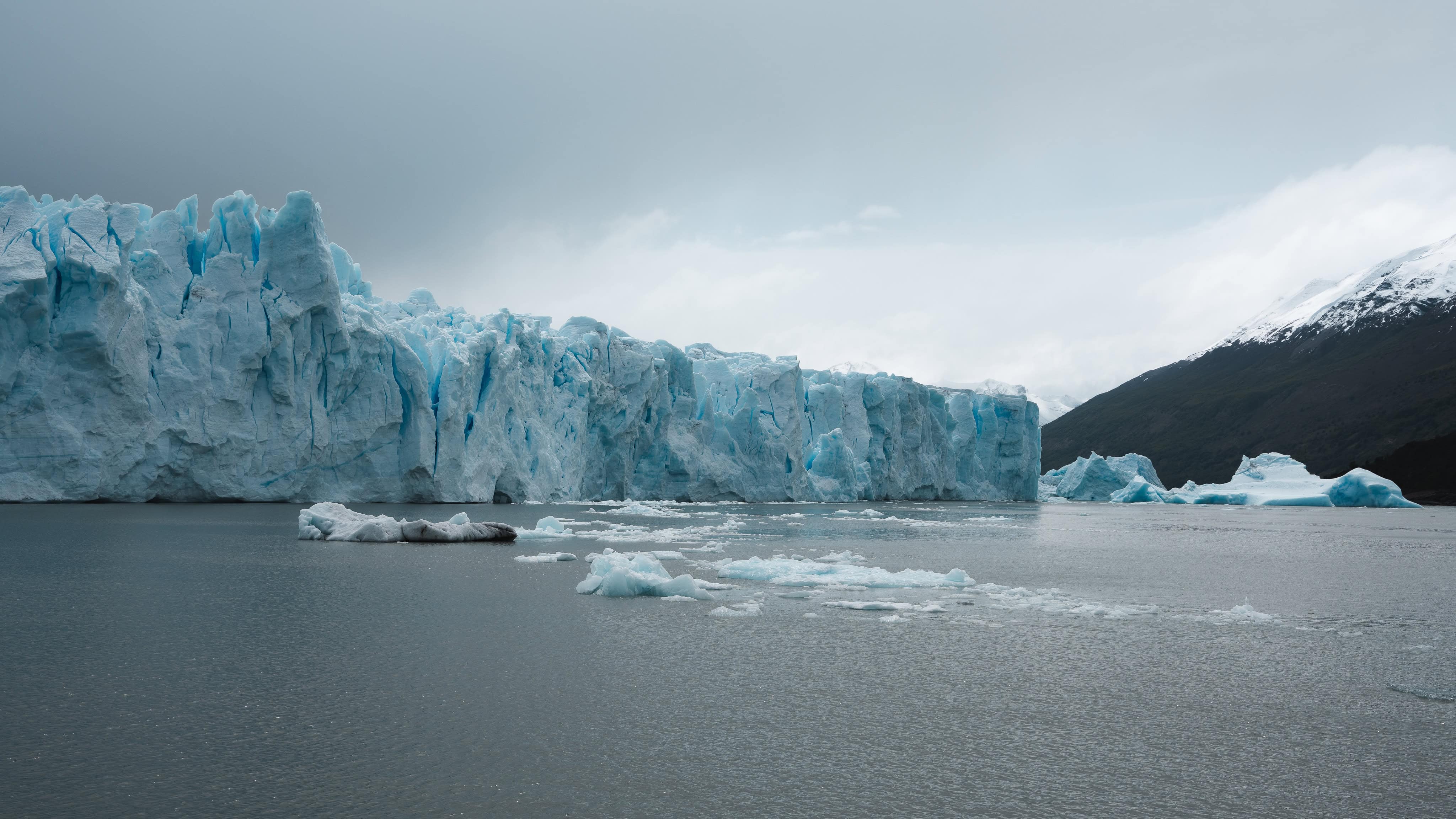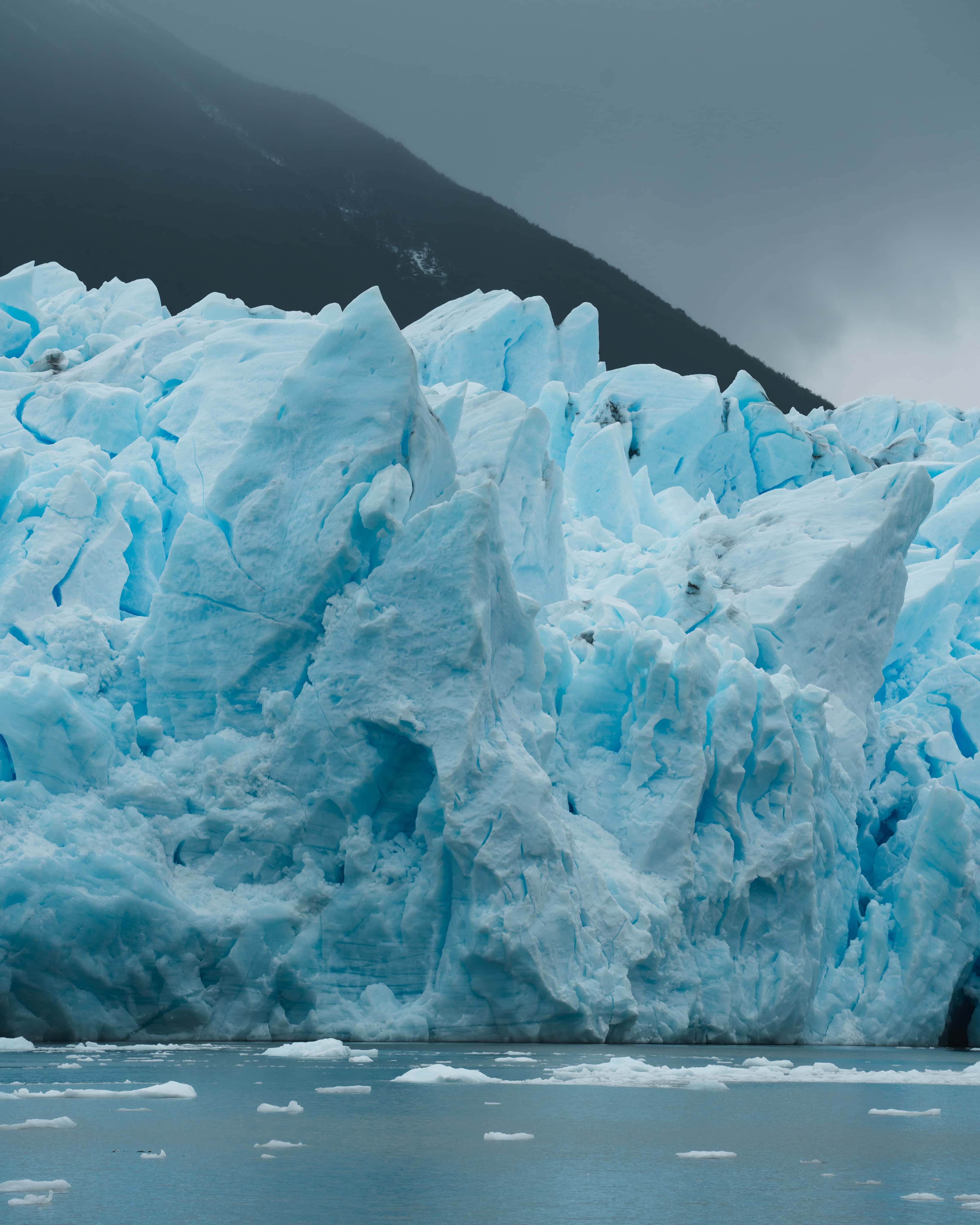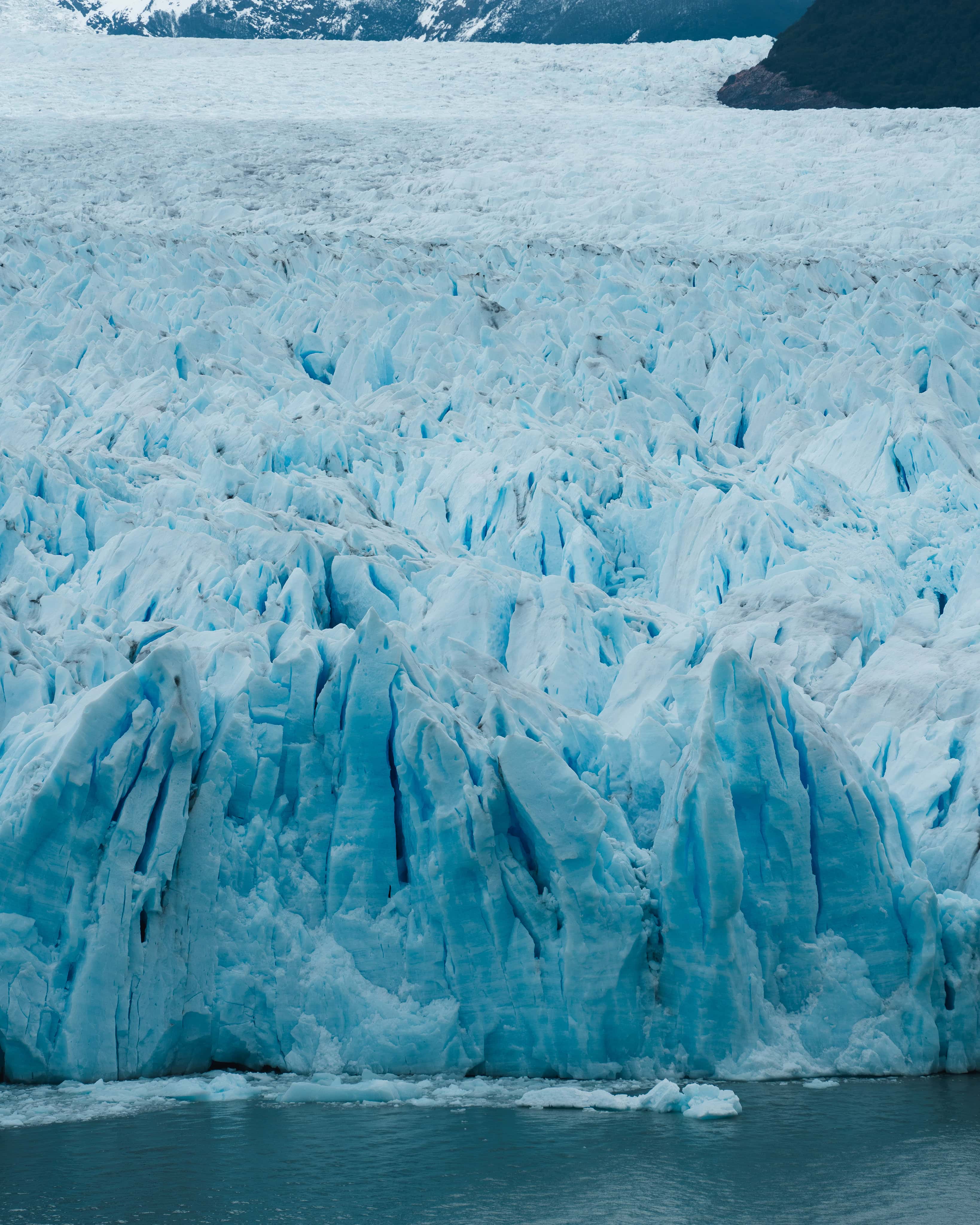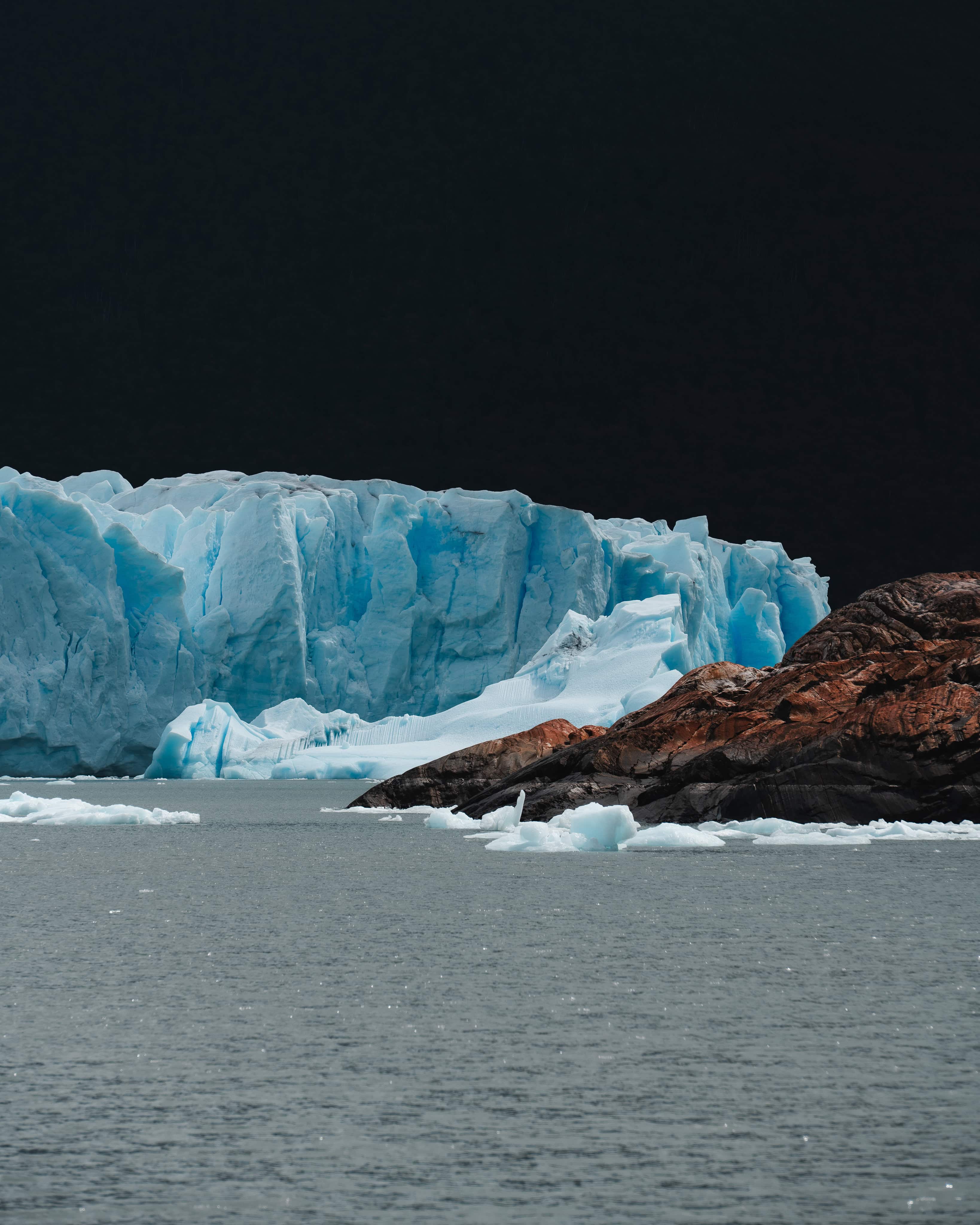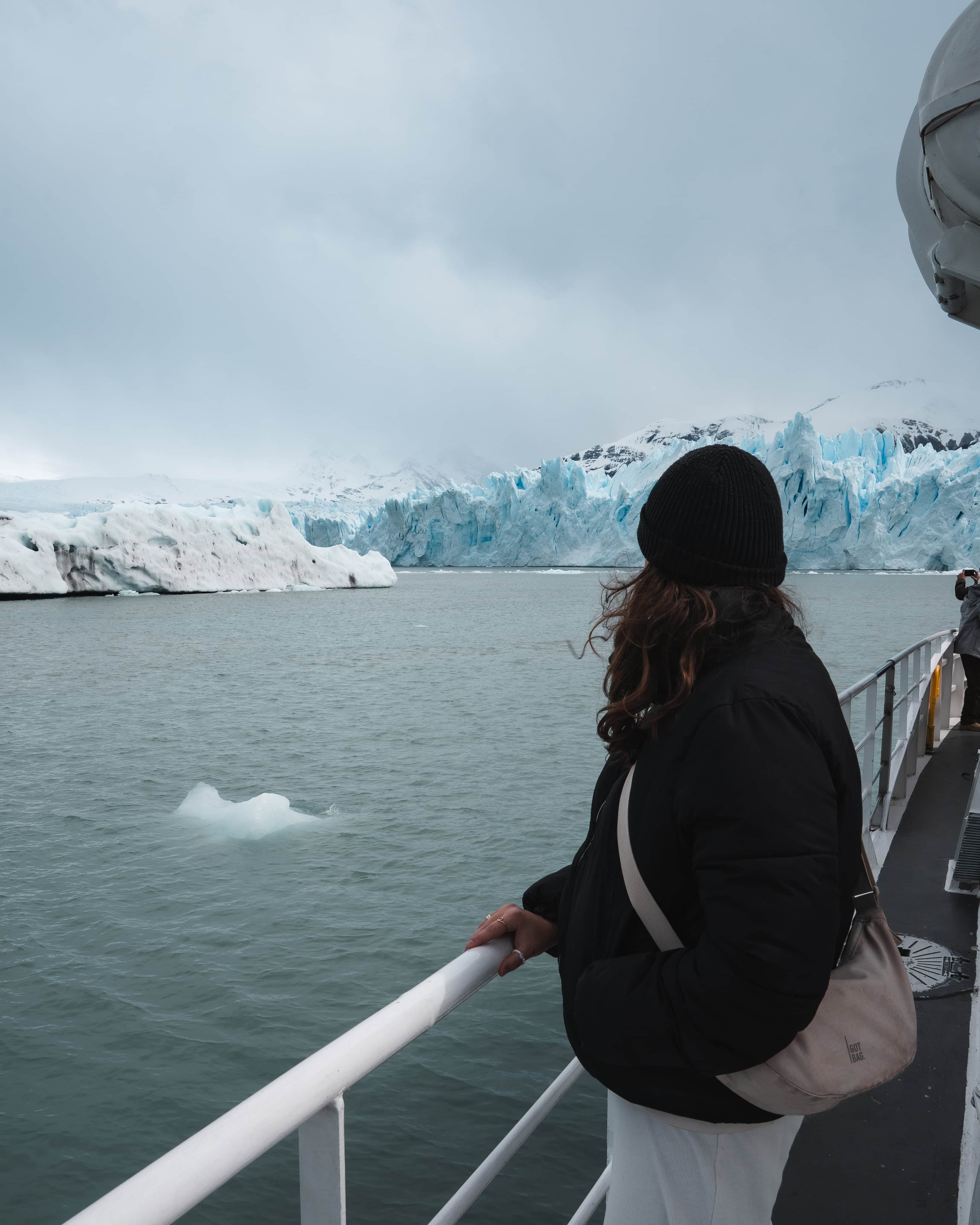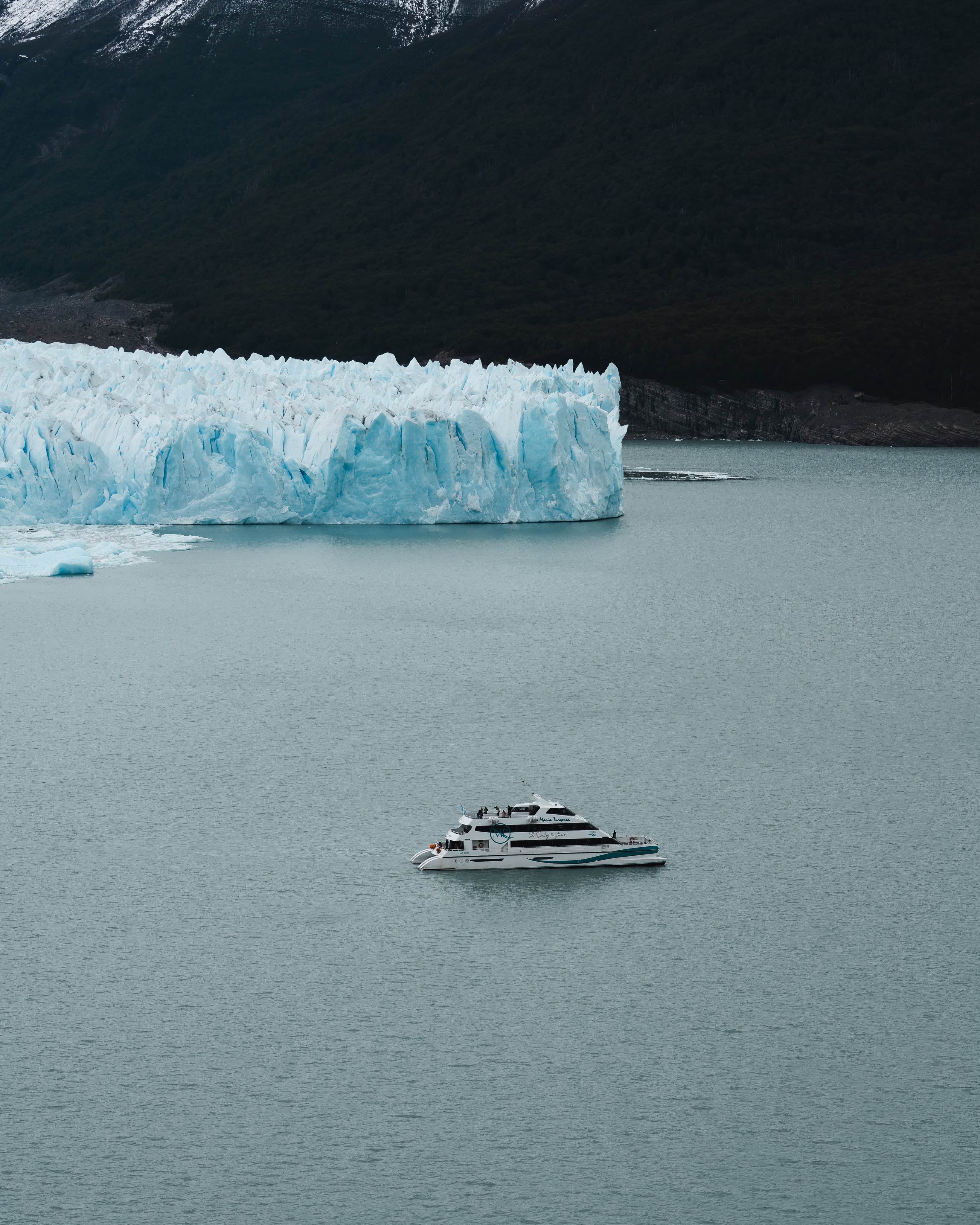The Perito Moreno Glacier is one of Argentina’s most famous and impressive natural wonders. This huge glacier tongue calves from the Southern Patagonian Ice Field into Lake Argentino, producing spectacular icefalls and offering visitors excellent accessibility. It is an absolute must-see for travellers coming to Patagonia, not only because of its size, but also because of its dramatic dynamics. Year after year, the ice shifts, forming ice bridges and damming up water, which finally crashes into the lake with a loud roar.
Location and geographical data
The glacier is located in the western part of the province of Santa Cruz, within the protected area of Los Glaciares National Park, approximately 80 kilometres northwest of the small town of El Calafate. It is one of around 48 glacier tongues that flow from the Southern Patagonian Ice Field. The glacier itself covers an area of around 250 km², is approximately 30 km long and has a front width of around 5 km, rising to a height of 60–75 m above sea level. The entire area is part of the UNESCO World Heritage Site ‘Los Glaciares’. These figures and the location are important reference data for travel planning.
History, discovery and origin of the name
The glacier is named after the Argentine explorer and surveyor Francisco Pascasio Moreno (1846–1919), who was often referred to as ‘Perito’ (expert). Intensive scientific research into the Patagonian glaciers began at the end of the 19^(th) century and continued into the 20^(th) century. Measurements and mapping provided an ever-greater understanding of the dynamics of the ice fields. Long-term studies have shown that Patagonian glaciers behave differently; many are retreating, while some remain in equilibrium. The Perito Moreno glacier was long considered particularly stable, exhibiting periodic advances and spectacular calving events. This made it a globally recognised special case.
Glacier calving: How and why it happens
This fascinating event is of interest to both tourists and natural scientists. When the glacier tongue completely crosses the narrow channel to the Magallanes Peninsula, a natural ice bridge forms, damming the water of the northern arm of the lake. The resulting difference in water level can be several metres. After weeks or months, the ice wall becomes so undermined and stressed that it breaks, sending large blocks of ice thundering into the lake. Historically, this spectacle occurred approximately every three to five years, but the exact timing is unpredictable as it results from the interaction of ice mass flow, melting and hydrodynamics. Visitors, rangers and researchers have been observing these processes for decades.
Current status and climate context
While Perito Moreno was long considered a rare exception – a large glacier that was not shrinking significantly – recent studies and reports show that this is no longer the case. Scientists and the media have recently reported a measurable decline in glacier ice in certain areas, as well as thinning and loss. Certain measurement series indicate that the glacier has lost area and length in recent years. This development is part of the wider trend of global glacier retreat due to warming, with implications for forecasts of Perito Moreno’s future development and the frequency and occurrence of future rupture events. For travellers, this means that the current spectacle is impressive, but the glacier’s shape is subject to change in the long term.

Visitor information: Getting there, viewpoints and activities
Most visitors start their journey in El Calafate. Daily tours to the park entrance depart from there. The distance is approximately 80 km, which can be covered by rental car, transfer or bus. Los Glaciares National Park has a well-developed system of footbridges, viewing platforms, and marked trails along the northern and southern sides of the glacier. These footbridges lead across several levels and offer a variety of perspectives, from panoramic views and classic photo spots to vantage points from which the calving of the glaciers can easily be observed. The infrastructure is designed to guide visitor flows while protecting sensitive vegetation and the shoreline.
There are options to suit different interests: those looking for impressive views without too much physical exertion can use the footbridges and platforms, which are perfect for photography and observing calving, as well as for watching the play of light and colour on the ice. Boat trips offer close-up views of the glacier wall and are particularly popular during calving events. Those who want to be physically active can take part in guided glacier hikes. These usually require advance booking and the use of special crampons, as safety is a priority. To gain a better understanding of the region’s geological background, climatic influences and biodiversity, ranger tours and visits to smaller exhibitions in the visitor centre are recommended for those with a long-term interest.
Best time to travel, climate and practical tips
The main season runs from November to March. During this period, temperatures are mild, there are more daylight hours and there is a greater chance of being able to go on boat trips. However, this is also the busiest time for tourism. Spring and autumn (October and April) are quieter times to travel, but the weather is more changeable. These seasons are ideal for photographers as there are fewer people and the light and cloud conditions are more dramatic. The weather and wind in Patagonia are unpredictable, so it is essential to wear layered clothing, a windproof jacket and sturdy footwear. Don’t forget sun and cold protection (sunscreen, hat and gloves), as well as water and snacks for day trips. As some activities (special treks and boat trips) must be booked in advance, it is advisable to plan ahead.
Nature conservation, park management and responsible travel
The Perito Moreno Glacier is located in the strictly protected Los Glaciares National Park, whose management sets visitor rules, trail routes and protective measures. Responsible travel means staying on marked trails, avoiding littering, respecting rangers’ instructions and choosing certified providers for guided tours. Scientific monitoring is important for understanding how glaciers develop. Supporting sustainable tourism offerings helps to finance research and conservation. In light of climate change, it is important for visitors to observe and raise awareness – not only as a tourist experience, but also as an opportunity to draw attention to the vulnerability of Patagonian ice landscapes.
The Perito Moreno Glacier is more than just a photo stop; it is a living laboratory of glacier dynamics and an impressive showcase of the forces of nature. At the same time, it is easily accessible to a wide variety of travellers. Its unique features include monumental ice masses, regular calving, and the opportunity to experience this phenomenon from safe footbridges, by boat, or even on foot on the ice. However, current scientific findings remind us that even seemingly stable natural wonders are affected by climate change. This is one more reason to visit this spectacular landscape respectfully and to share its stories.

